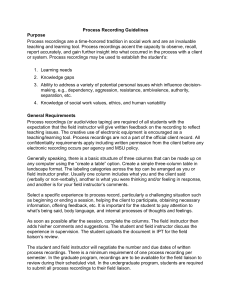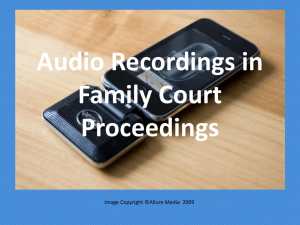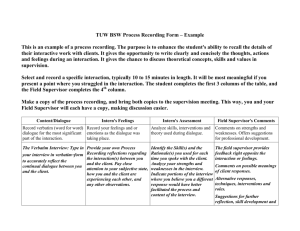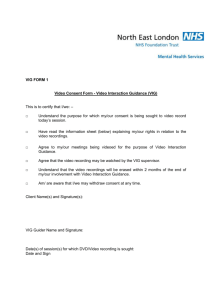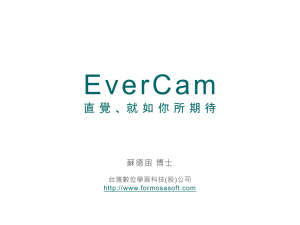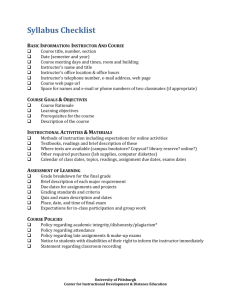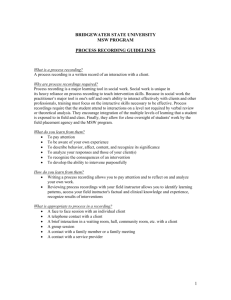Click here
advertisement
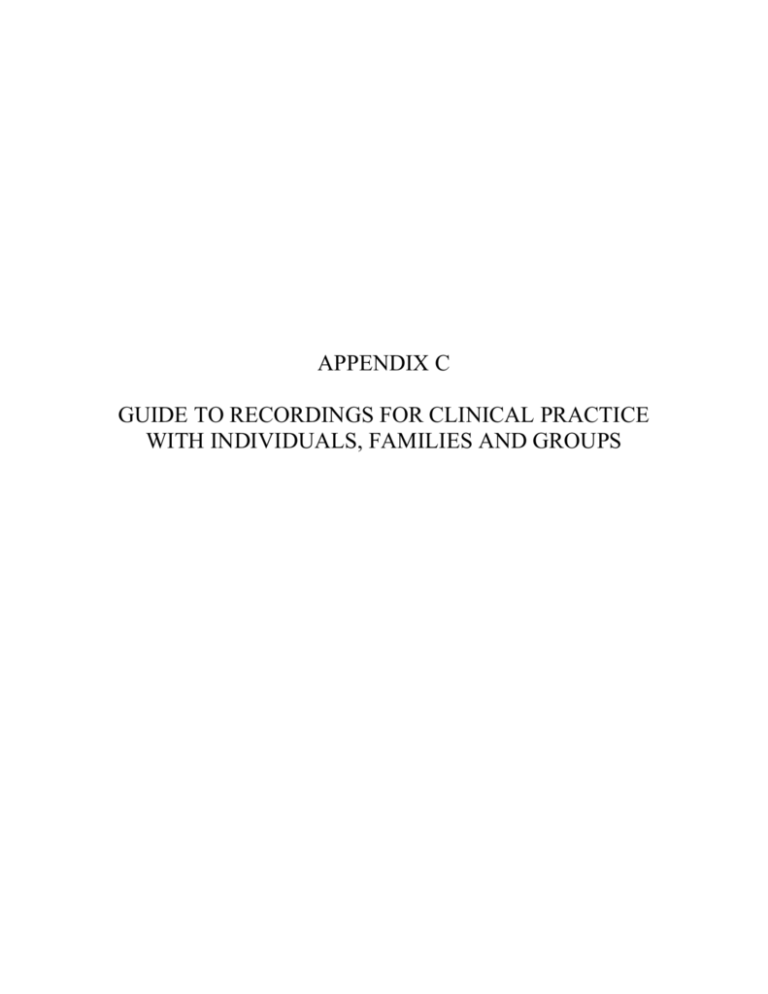
APPENDIX C GUIDE TO RECORDINGS FOR CLINICAL PRACTICE WITH INDIVIDUALS, FAMILIES AND GROUPS GUIDELINES FOR THE FORMAT OF RECORDINGS FOR CPIFG MAJORS Format: Narrative Recording Guide The following is a general guide with the basic elements that should be included. This is the format for recording that the Field Work Office and Chair of Clinical Practice recommend. 1. Identifying Pertinent Information – i.e. client age, gender, racial or ethnic identification, and session number. 2. Purpose/Focus - A general statement of why the client(s) is being seen. Is there agreement on purpose by the client and the worker? 3. Dialogue/Content of Session – Tell the story of the interview or contact. Initially the more detailed the better so that the student can look at the latent content of the client’s statements and how s/he is responding to the client’s narrative (i.e., cultural context, overt message, conflict, feelings, etc.). Also, include the non- verbal observations of the client (i.e., appearance, seating, body language, speech, affect), in context with the dialogue. As a student progresses during the year and other activities increase the student may need to write process on the beginning and the end of the session and any parts on which they need or want specific feedback. Moving from a process recording to a summary recording should be discussed with the field instructor. 5. Observations/Reflections - Impressions, thoughts and feelings about the session, and the nature of the interactions as you understand it from the client’s perspective, your feelings and reactions and interactional/relational issues. 6. Assessment/Analysis – For advanced students, this can be done selectively. Identify stage of the work, e.g., pre-engagement, contracting, engagement, assessment, implementation of an intervention. What did you learn from the session that adds to your understanding of the client and the client’s bio-psycho-social situation? How has the client’s narrative changed your understanding of the presenting problem and how to develop an intervention? What were the major themes? What did you learn about a client’s functioning both in terms of areas of strength and areas of need? What did you learn about the clients’ social environment or social network in terms of stressors and supports, the impact of factors such as oppression, poverty, racism in the clients’ life? What concepts or theories did you apply? 7.Questions/Issues - What questions/issues do you have about this interview that you would like to discuss with your field instructor? Identifying and discussing these issues and questions shouldbe a major focus of the supervisory conference. 8.Evaluation and Next Steps/Plan for the Next Session– What are your plans for the next meeting with the client? How will you advocate for and obtain services for the client(s)? How will you anticipate the efficacy of your planned interventions and how the client will experience them? Note: The plan can be amended after discussion and input from the field instructor. Conference Agenda - Include questions or topics for discussion in field instruction conferences about recordings, assessment, intervention, resources and general practice concerns or learning needs. Primarily student generated but field instructors can contribute additional topics for discussion. Format: Verbatim Recording Guide (2-column) Verbatim recording should only be used for selected parts of an interview. (See earlier discussion in Manual under Guidelines for Clinical recording, use of verbatim recording.) Student name: Date: Number of session: Client Identifying Info: Reason(s) for referral and/or presenting problem(s): Focus of this session Selective Verbatim Dialogue/Content Thinking/Feelings/Reactions IMPRESSIONS/REFLECTIONS: QUESTIONS/ISSUES FOR FIELD INSTRUCTOR: Format: Summary Recording Guide (Agencies may have their own formats.) Student name: Date of session: Number of session: Client Identifying Info: Reason(s) for referral and/or presenting problem(s): Purpose of this session (why client is being seen): Objectives/goals of this session: Summary of Dialogue and Content (i.e. major themes, selected excerpts, etc.): Observations--Impressions/Thoughts/Feelings: Assessment/Analysis of the Session: 1. Identify the stage of work with client/client system (i.e., pre-engagement, engagement, assessment, intervention, evaluation). 2. What did you learn from the session that adds to your understanding of the client? 3. What were the major themes (manifest vs. latent content)? 4. What were the challenges presented? 5. How do you think the client experienced the session? 6. What concepts or theories did you apply? Questions for Field Instructor: Next Steps/Plans for the future session:


